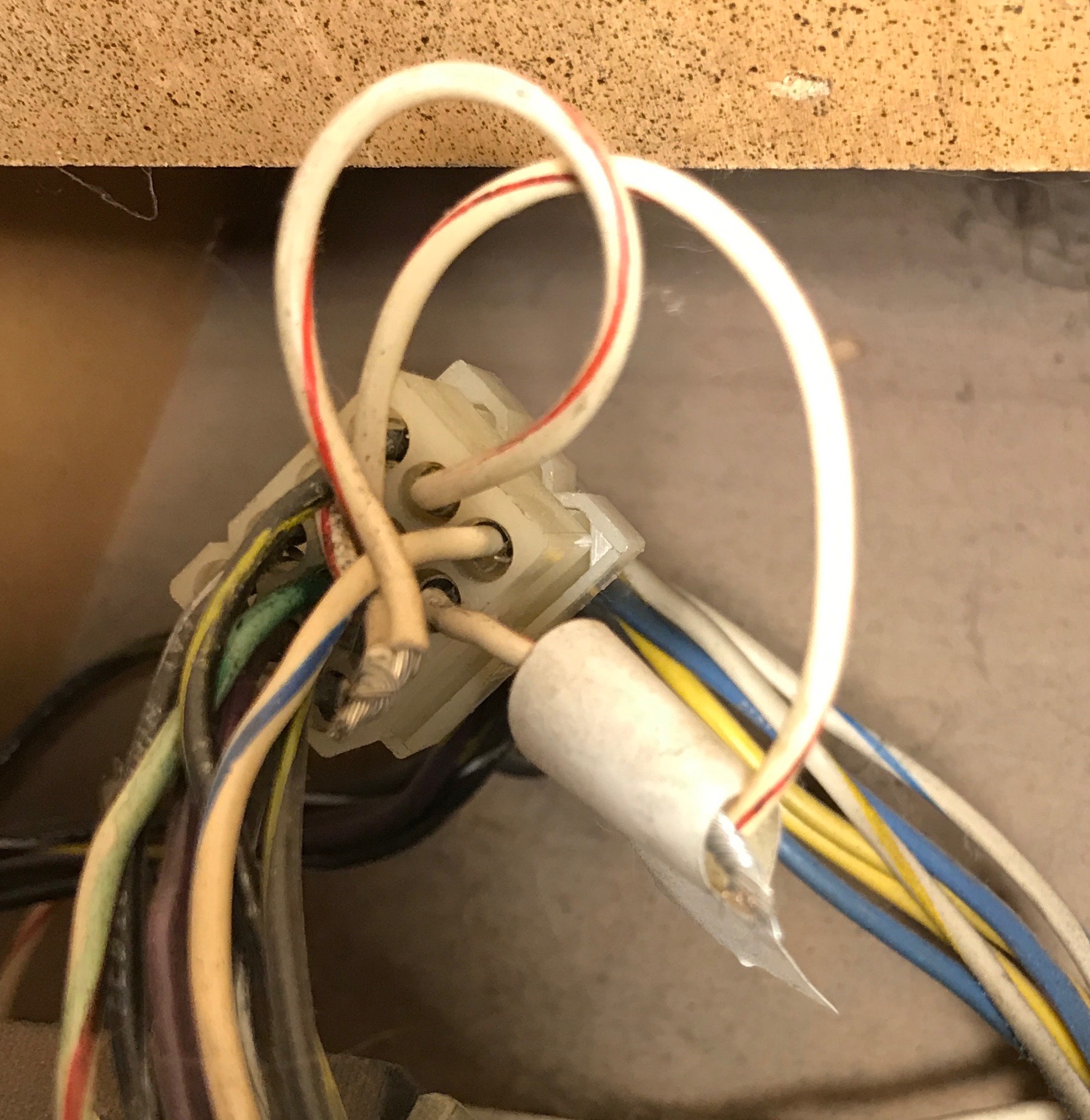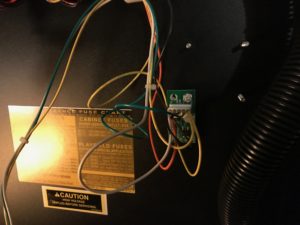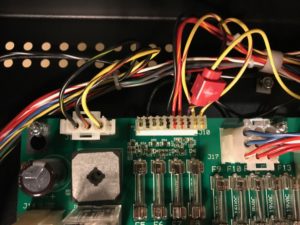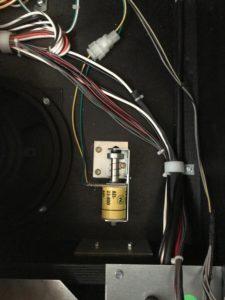I just installed a knocker in my World Poker Tour. I used Stern’s step-up board, the one that is used for the kickout from the bumpers, available from the usual suspects. I got most of my information from this page.
A few random notes:
I used a 520-5254-00, available from Pinball Life, and documented in the WPT manual. Because the knocker drive transistor can only sink 20V, a step-up board is required.
Three connections to the game are required: +50V, solenoid ground, and signal. Okay, you could probably use +20V if you wanted a wimpy knock from a wimpy coil. You can source the signal from the connector under the playfield that is used to drive the coin counter that nobody installs. +50V and solenoid ground can be found on J10. On WPT, it appears that pin 8 is not used, but it is fused by F7. Great deal! Three pins on J10 offer solenoid ground. I used pin 2, but 4 and 5 would have worked. (You can pick up ground anywhere, but it is probably better to pick up the officially blessed solenoid ground.) I happen to have an IDC punch-down tool. I’ve had it for fourteen years, and now I’ve used it. I didn’t have to solder anything (other than the coil) because I picked up all of the connections from connectors that already existed, which makes for a nice clean install.
I installed a Williams knocker, in the head. Mine was apparently from a High Speed, but it’s the same mechanism Williams used until they gave up on knockers. The geometry of the Stern head leaves a lot to be desired from a knocker perspective. I will probably install the next knocker in the cabinet, and even that can be trying as I have discovered previously.
I put the head in the upper-right mounted to the side of the cabinet. This was a tight squeeze for the assembly, and it was hard to install and it will be hard to remove for service. I mounted the knocker on a block of scrap wood, then screwed that to the cabinet. I don’t like the adapter block, but because of the diagonal brace in the corners of the head, a the knocker wouldn’t have clearance if it screwed to the head directly, and there’s no room for it on the back of the head.
I set the Q24 option to “knocker” and the “knocker volume” to off. I discovered the “knocker” test drives both the real knocker and the fake knocker and it’s loud as hell. There is no other test for Q24.
Next time I install one of these, should I ever get another Stern game, I’ll probably try the Gottlieb knocker. It doesn’t require a separate strike plate. Running on +50V, it’s probably not as anemic as in a Gottlieb game. Or, perhaps I’ll mount a Data East-style unit in the head, down below the computers, where there’s space.
A modern Williams knocker fires up and has no spring. Bally, Data East/Sega, and old Stern Electronics knockers fire at the side of the cabinet. The bracket used for Data East is the same as Williams, but the plunger is different. Old Williams knockers, like on Firepower, and Gottlieb knockers fire at their own bracket, and are mounted in the cabinet. Stern Pinball has never used a knocker.
The sound of a Stern knocker is different than a Williams knocker. It’s more of a thud than a crack. I suspect the coil pulse is longer. I prefer the knocker on my Twilight Zone, but any mechanical knocker is better than the pop on a Stern game.
Adding a knocker to my Simpsons Pinball Party was similar, but I used a “Data East” knocker assembly (really, it appears to be a kickback assembly) and mounted it in the body. This gets even more of a “thud”, and it’s not nearly as loud, but not as satisfying. Finding solenoid ground and +50V was more difficult and I did a bad job. I should clean it up.
Update: there may be two versions of the 520-5254-00 board, one that takes a 20V input and one that doesn’t. I haven’t used the 20V on yet, but that’s the one I want for future games. I asked about the difference to Stern’s technical support, and they responded:
The newer step up driver boards use 20V and 50V. The coil will fire using the 50V power. The 20V input is used to sense weather or not the voltage is present. This is important because if you have 50V without 20V, the coil will turn on until the fuse blows. I would recommend the new board!
I’m trying to confirm that the two boards have the same part number. There are pictures of a five-pin version online with the same version number, but the parts sellers only picture the four-pin version.
With the four-pin version, sometimes my games knock on power-on, I assume due to the problem outlined above. (A little like the System 80 thunk, I’m sorry to say.)




